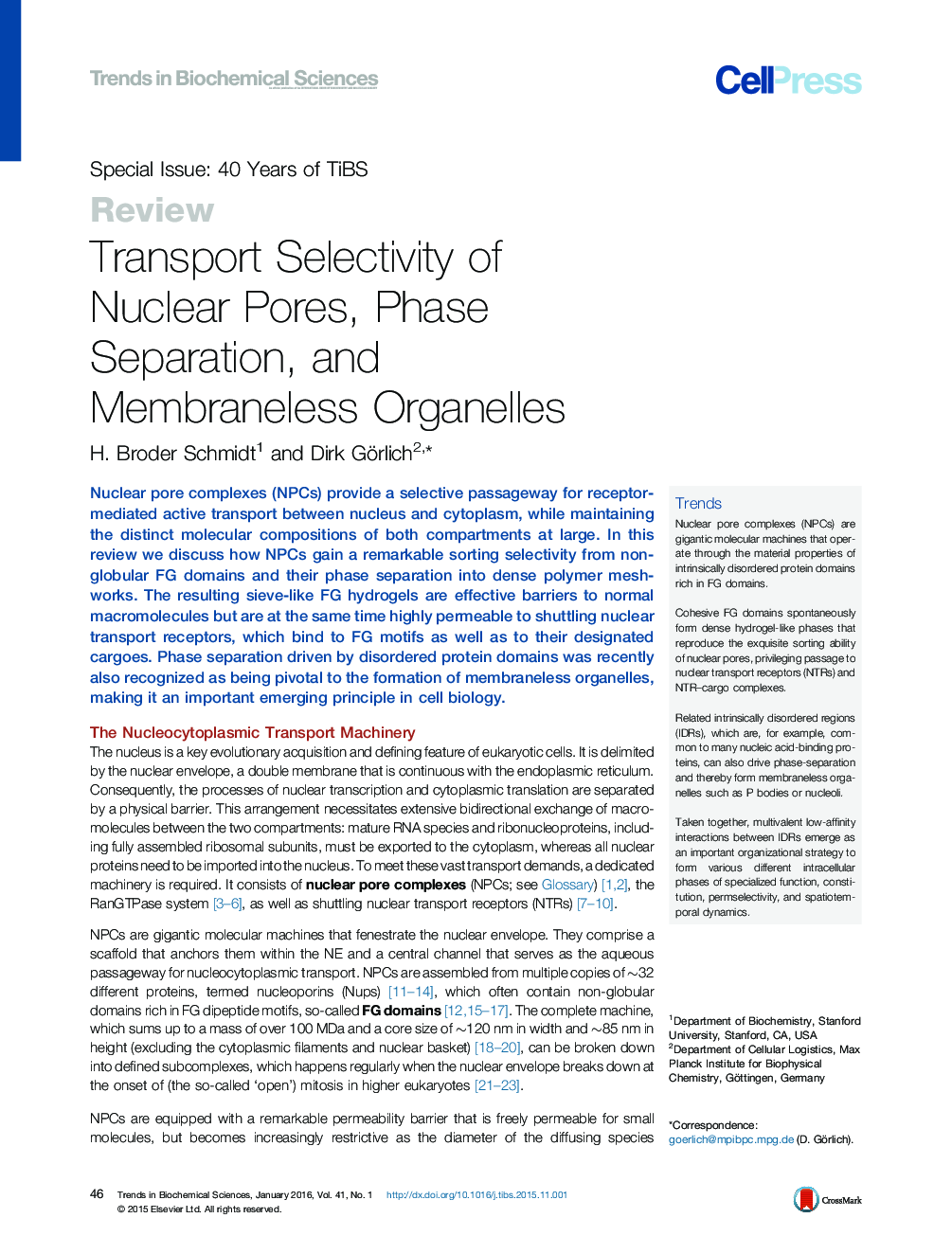| Article ID | Journal | Published Year | Pages | File Type |
|---|---|---|---|---|
| 2031598 | Trends in Biochemical Sciences | 2016 | 16 Pages |
Nuclear pore complexes (NPCs) provide a selective passageway for receptor-mediated active transport between nucleus and cytoplasm, while maintaining the distinct molecular compositions of both compartments at large. In this review we discuss how NPCs gain a remarkable sorting selectivity from non-globular FG domains and their phase separation into dense polymer meshworks. The resulting sieve-like FG hydrogels are effective barriers to normal macromolecules but are at the same time highly permeable to shuttling nuclear transport receptors, which bind to FG motifs as well as to their designated cargoes. Phase separation driven by disordered protein domains was recently also recognized as being pivotal to the formation of membraneless organelles, making it an important emerging principle in cell biology.
TrendsNuclear pore complexes (NPCs) are gigantic molecular machines that operate through the material properties of intrinsically disordered protein domains rich in FG domains.Cohesive FG domains spontaneously form dense hydrogel-like phases that reproduce the exquisite sorting ability of nuclear pores, privileging passage to nuclear transport receptors (NTRs) and NTR–cargo complexes.Related intrinsically disordered regions (IDRs), which are, for example, common to many nucleic acid-binding proteins, can also drive phase-separation and thereby form membraneless organelles such as P bodies or nucleoli.Taken together, multivalent low-affinity interactions between IDRs emerge as an important organizational strategy to form various different intracellular phases of specialized function, constitution, permselectivity, and spatiotemporal dynamics.
